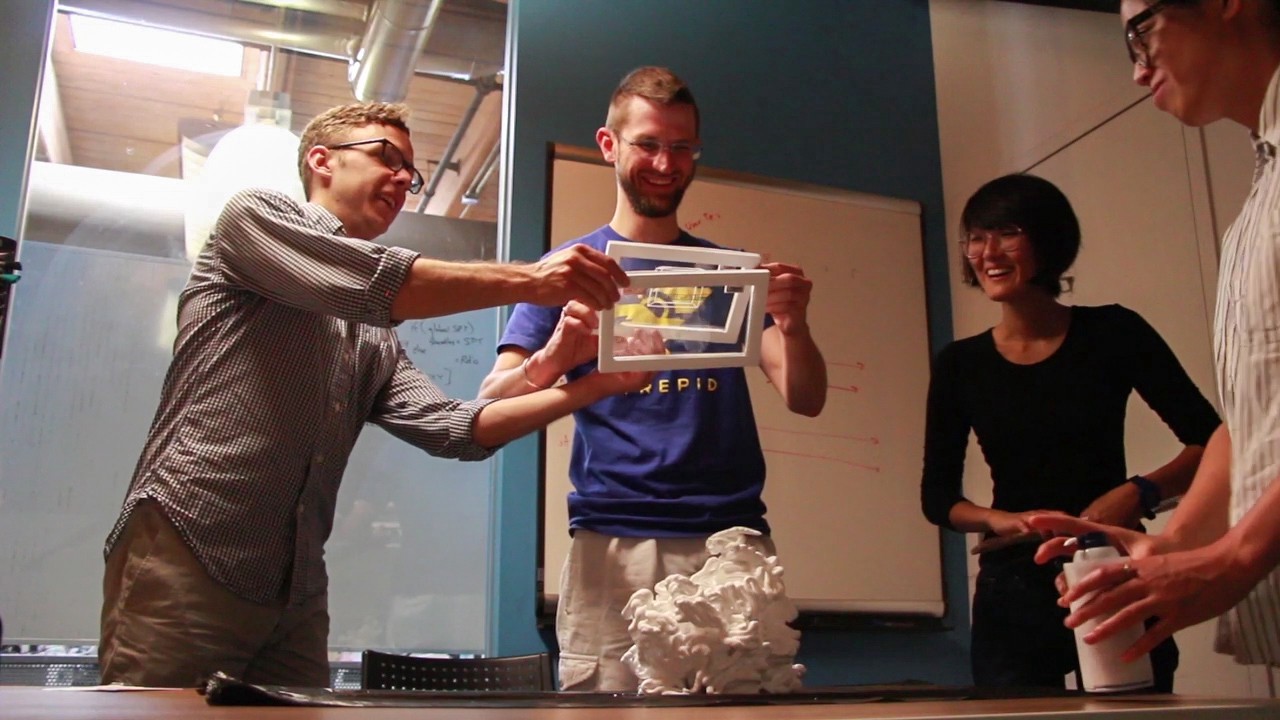Occipital Usability Testing
Evaluating a 3D Sensor for User Adoption
Heuristic Analysis, Usability Testing, Prototyping
Occipital is a SF-based spatial computing startup that wants to bring the power of computer vision to everyone. Their successfully crowdsourced Structure Sensor is the world’s first ever 3D sensor entirely on mobile. Its depth sensors allow for AR capabilities that blur the boundaries between physical and digital reality.
Our team at Fresh Tilled Soil were asked to evaluate the Structure Sensor and its current offering of demo apps. Each app act as an accessible entry point for users to test the hardware’s capabilities and imagine use cases for future development.
Role: UX Researcher/ Designer
Collaborators: Islanda K. Naughton, Tricia Ravelo, Luke Salinger
Client: Occipital
Skills: Heuristics testing, journey mapping, mental mapping, user testing, wireframing, prototyping
Initial Evaluation
After running the apps through heuristic tests and user tests we found that users struggled to learn to use the apps, didn’t know why something's wrong, and had difficulty enjoying their first time experience.
Overall there was a lot of uncertainty and self-doubt. Most people just weren't sure if they were performing the scan correctly. They identified the lack of feedback during the scan as the main cause for their uncertainty, and wished that they would receive more helpful coaching.
Overall there was a lot of uncertainty and self-doubt. Most people just weren't sure if they were performing the scan correctly. They identified the lack of feedback during the scan as the main cause for their uncertainty, and wished that they would receive more helpful coaching.
After the initial scan, almost all users abandon the app. Besides viewing the 3D model or emailing themselves the file, there wasn't much they could do.
Key Findings:
Key Findings:
- A lack of visible real-time cues in the app to help users during scanning
- A lack of user-friendly language
-
Unhelpful onboarding tutorial
-
Inconsistency in UI elements
- A lack of meaningful use after scan
LISTENING TO USERS
We interviewed users to further investigate their needs, pain points and behavior patterns.
![]() User persona
User persona
 User persona
User personaINTERVIEW INSIGHTS
- There’s a noticeable quality trade-off. The scanner results are less precise than high-end scanners.
- Access to hardware is important - users want to try before they buy.
- Developers are selective about what technology they investigate - there are new frameworks coming out every day.
- They couldn’t see many applications for the scanner - it primarily appeared useful for game development.
OUR HYPOTHESIS
It appears that a difficult first-time experience and a lack of identifiable use keeps the sensor from continued user adoption.
Our assumption is that by improving the usability we can increase user confidence and create a better first-time experience leading to long-term use.
Improving Usability
To begin testing our hypothesis, we started by looking at the app’s user flow for areas of improvement. We found redundant features, unclear UI and text, and a limited sharing option.


The final flow is much more linear, with clear warnings, a consistent UI and an accessible sharing option.
PROTOTYPING 3D & LIVE FEEDBACK

Redesigned on-boarding tutorial
Due to the complexity of the 3D scanning hardware we opted for a low-tech solution using museum board viewfinder, clear acetate and sprayed whipped cream to recreating the illusion of live feedback.
USER TESTING OUR HYPOTHESIS

User testing our prototype
When we tested the new and improved prototype with users, they found it to be a delightful upgrade. They felt the buttons were placed more appropriately, and alerts seemed more helpful. Users saw the improvements we made as positive, and said it made the experience better.
However we found this improved ease of use doesn’t solve the lack of purpose for users and they still couldn't see any need to use it beyond the first few times. One user said:
“ 3D apps have gotten a lot better... but I don't know why I would use them beyond taking 3D photos.”
— SCOTT, DEVELOPER
This is the crux of the problem. We underestimated this underlying lack of need. The app wasn’t addressing anyone's problem.
Beyond the interface, beyond the usability, the core problem was in the goal of the app or rather, what goals are we helping our users to achieve?
Arriving at The Right Question
The Occipital sensor is unique as it’s the first mobile, real-time depth sensing and location tracking technology on the market.

Identifying the sensor’s differentiating factor
We should focus on this differentiating factor and developing one polished consumer-level app that serves an everyday need.
POSSIBLE USE CASES
- Furniture Buyers: utilize depth-sensing to scan a piece of furniture and with AR project it within the home
- Interior Designers: aid designers in quickly creating accurate floorplans
- Fitness Trainers: help trainers measure vital client body measurements
- Game Creators: allow game devs to make low-poly 3D game assets
Learnings
- Limitations of usability testing and information architecture improvement
- You will find a wealth of information from user testing (developers are still users!)
- Accurate insights can be extrapolated from a few user interviews (qualitative over quantitative)
- Idea generation within different industries